Baalbek, Temple of Venus
Baalbek or Heliopolis (Greek: Ἡλιούπολις, "sun city"): town in the northern Bekaa valley, site of the largest sanctuary in the Roman world.
Court of Venus and the Muses
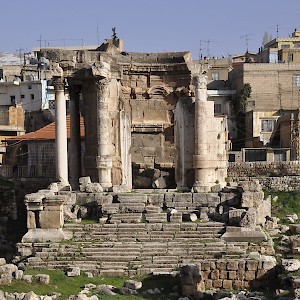
Some two hundred meters southeast of the altars on the Great Court of the temple of Jupiter in Baalbek, and separated from it by a colonnaded street, was the complex of Venus and the Muses. It is a more or less square field - in fact, trapezoidal - surrounded by a colonnade; on the field are two small shrines. The square one was dedicated to the Muses; in the other one, facing the Jupiter temple, Venus was venerated.
Temple of Venus
The temple of Venus was built in the third century. It has a highly original design: built on a horseshoe-shaped platform, it consists of a circular shrine with a square entrance that is almost as big. The outer façade of the shrine is graced by five niches, which means that there is not a single square wall. In the niches are representations of doves and shells, which has been taken as evidence that the shrine was dedicated to Venus.
The square entrance probably was not one of those classical triangle-shaped pediments supported by columns. In fact, the straight horizontal line was broken by an elegant arch. This is certainly not without parallel, but the baroque ensemble suggests that the architect wanted to show off that he was the best and the brightest. He succeeded.
If we are to believe the Christian author Sozomen, and if this is the temple of Venus, this was also the place where, during the reign of the emperor Julian (r.361-363), pious Christian virgins were devoured by swine.note Sozomen adds that this was because the Christian authorities had, on an earlier occasion, outlawed sacred prostitution; killing the Christian anti-prostitutes was therefore a logical revenge. We cannot know whether the story is true; stories about ancient cultic prostitution are nearly always unreliable.
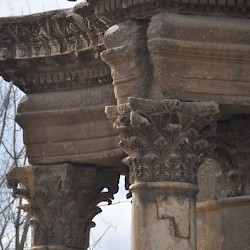 Baalbek, Temple of Venus, Capitals |
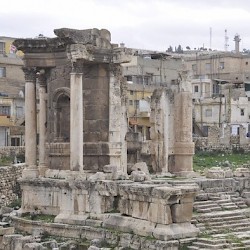 Baalbek, Temple of Venus |
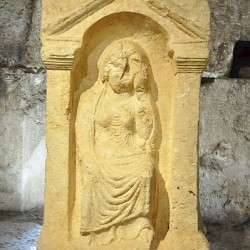 Baalbek, Temple of Venus, Relief of a mourning woman |
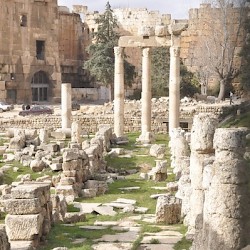 Baalbek, Temple of Venus, Colonnade |
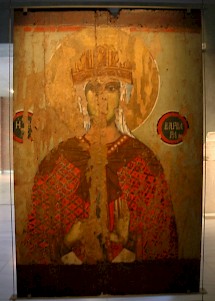
The temple was later used as a church, dedicated to Saint Barbara. According to the (comparatively late) Christian legend, she was the daughter of a Heliopolitan dignitary, Dioscorus, who still worshipped the old gods. When he learned that she had been baptized, he killed Barbara and was immediately struck by lightning. Up til the present day, Saint Barbara is invoked if people want to be protected against lightning, and it is possible that this is in fact a continuation of the ancient cult of Hadad.
Because the monument continued to be in use, the temple of Venus is comparatively well-preserved. Cult has continued on almost the same site, because there's still a small mosque next to the temple of Venus. The Greek-Orthodox church of Baalbek, which is close by, is still dedicated to Saint Barbara.